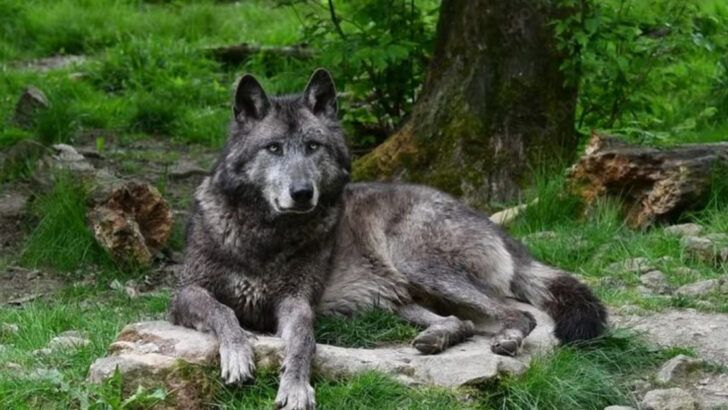Some wolves look like they were dreamed up in a fantasy novel—and somehow, they’re completely real. We’re talking giants that stand taller than Great Danes. Tiny forest-dwellers you could almost carry in a backpack. Arctic ghosts, red-coated prowlers, and wolves with eyes like glowing embers. These aren’t your average gray pack-hunters. These are the extremes—the outliers. The wolves that make people stop, stare, and say, “That can’t be right.” From the biggest howlers to the tiniest shadows of the wild, meet 14 wolves that stretch the limits of what we thought was possible.
Dire Wolf
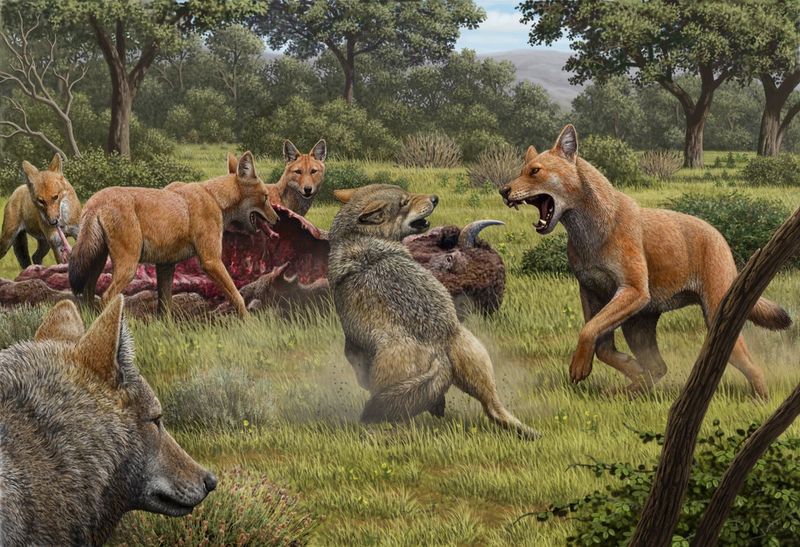
In the Pleistocene epoch, the Dire Wolf roamed the lands, striking awe with its formidable size. This colossal creature, larger than today’s gray wolves, was a top predator. Imagine standing face-to-face with a wolf nearly 5 feet long and weighing 150 pounds. Despite its intimidating appearance, it wasn’t just brawn but also had a keen sense of smell. Fossils found across North America tell stories of ice age battles and survival. Its jaws could crush bones, a testament to its strength. Yet, its extinction marks a mysterious chapter in the history of wolves.
Mackenzie Valley Wolf
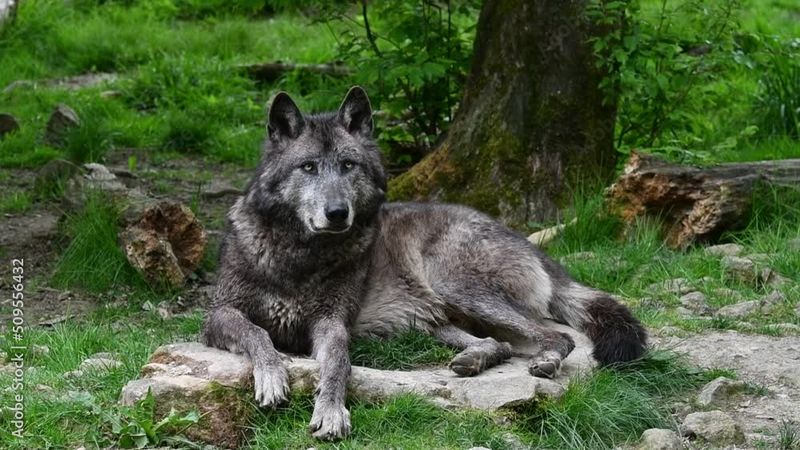
The Mackenzie Valley Wolf, a formidable giant of the north, thrives in the harsh Arctic tundra. Weighing up to 175 pounds, these wolves are among the largest. Their thick fur is not just for warmth; it’s a symbol of resilience. You’d find them leading packs, showcasing their strength and intelligence. With a diet primarily consisting of large ungulates, they’re crucial in maintaining ecological balance. Their howls echo across vast landscapes, a haunting melody of the wild. The Mackenzie Wolf remains a powerful emblem of wilderness, admired and respected in equal measure.
Eurasian Wolf
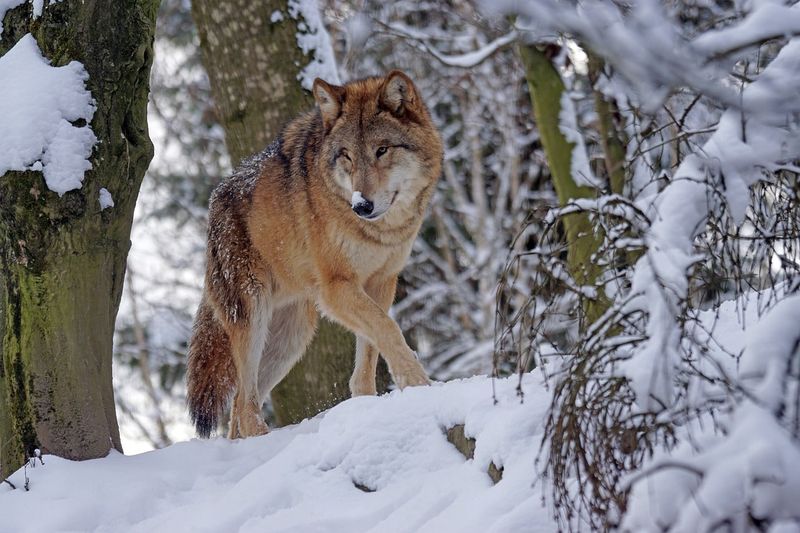
Roaming the forests of Europe and Asia, the Eurasian Wolf is a sight to behold. Unlike its larger cousins, it’s known for agility and adaptability. Its striking amber eyes hint at ancient stories and legends. Often traveling in packs, they display complex social structures. These wolves are vital to their habitats, controlling prey populations and fostering biodiversity. Their presence has inspired countless folklore and myths. Adaptable yet elusive, they symbolize the untamed spirit of the wilderness. In the face of modernization, the Eurasian Wolf is a reminder of nature’s enduring legacy.
Arctic Wolf

Amidst the icy landscapes of the Arctic, the Arctic Wolf reigns supreme. Its white fur offers perfect camouflage against the snow, a testament to evolution’s brilliance. These wolves are smaller than their gray cousins, yet their survival skills are unmatched. In a world where temperatures plummet, they’re masters of adaptation, thriving where few others can. Their diet includes muskoxen and Arctic hares. Social creatures, they live in close-knit families. The Arctic Wolf’s existence in such harsh conditions is a tribute to nature’s resilience and the wonders of evolution.
Gray Wolf
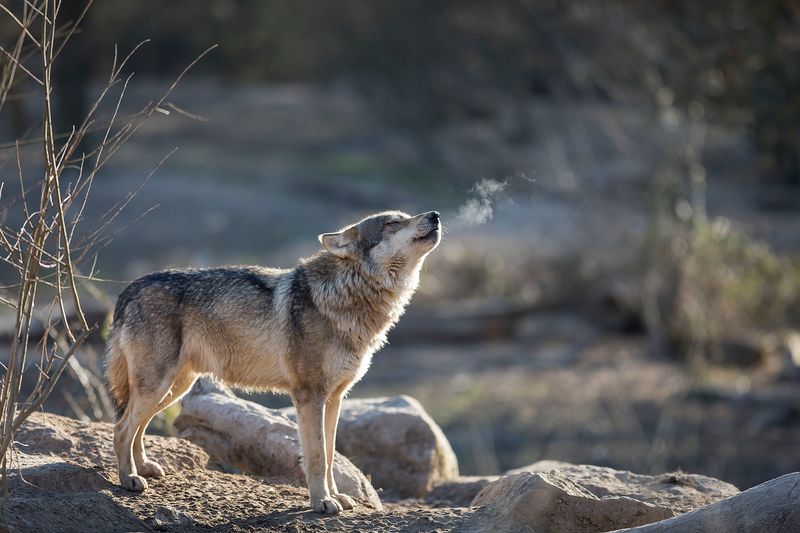
The Gray Wolf, an icon of wilderness, is known for its strength and intelligence. Found across North America and Eurasia, they’re masters of adaptation. With a complex social structure, packs work together in hunting and raising young. Their haunting howls are a symbol of the wild, echoing through forests and mountains. Wolves are keystone species, maintaining ecological balance. Despite their importance, they face threats from habitat loss and hunting. A symbol of untamed nature, the Gray Wolf evokes both fear and admiration. They remind us of the wild’s beauty and fragility.
Eastern Wolf
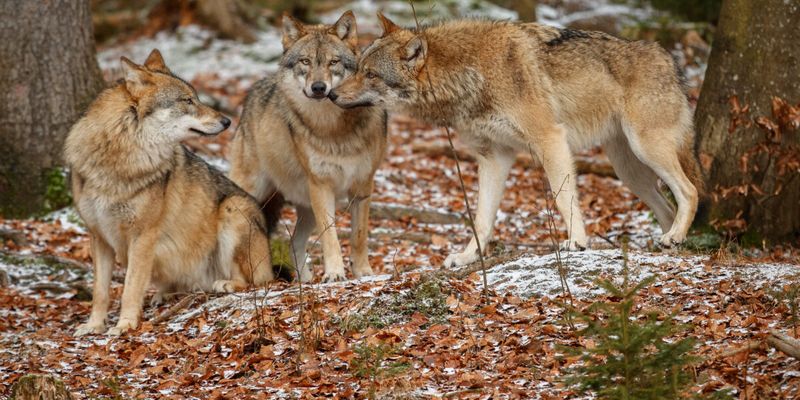
The Eastern Wolf, a blend of gray wolf and coyote, roams the woods of eastern North America. Its reddish-brown fur is as striking as a forest sunset. This wolf plays a vital ecological role, bridging two species. Often misunderstood, they’re shy yet curious. They form tight-knit packs, displaying deep social bonds. With a diet of deer and small mammals, they’re skilled hunters. Conservation efforts are crucial to their survival. The Eastern Wolf is a living testament to nature’s ability to adapt and evolve amid challenges. Their story is one of resilience.
Red Wolf

The Red Wolf’s tale is one of survival against the odds. Native to the American Southeast, it’s critically endangered. With red-tinged fur and a lean build, it’s both beautiful and vulnerable. Conservationists have worked tirelessly to save it from extinction. Living in wetland habitats, they hunt alone or in small packs. Their presence is vital for maintaining the ecological balance. The Red Wolf is a symbol of hope and perseverance. Despite challenges, dedicated efforts continue to restore their populations, ensuring future generations witness their striking beauty in the wild.
Indian Wolf
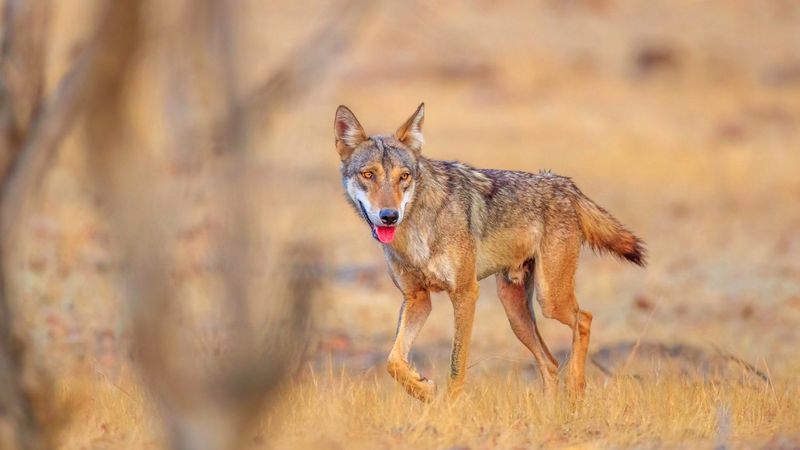
In the arid landscapes of the Indian subcontinent, the Indian Wolf survives where others might falter. Smaller and leaner than its northern counterparts, it navigates the desert with grace. Its presence is vital for controlling prey populations. Social and adaptable, they live in small packs, often seen under the shimmering desert sun. They symbolize survival in challenging environments. Conservation efforts are essential for their protection. The Indian Wolf’s story is one of endurance, a reminder of the diversity and complexity of life on Earth, thriving against the odds.
Tundra Wolf
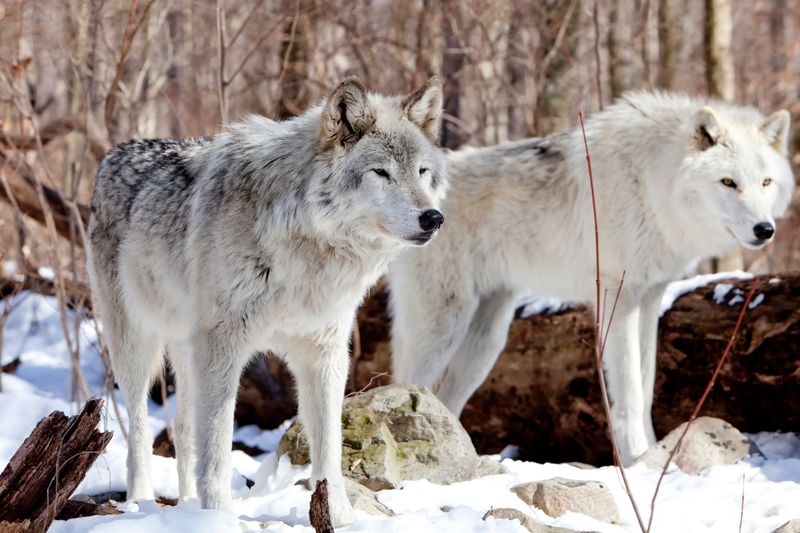
The Tundra Wolf, a subspecies of the gray wolf, thrives in the frigid arctic tundra. Its thick fur is perfectly adapted to withstand harsh winters. These wolves are larger than their forest-dwelling relatives, showcasing nature’s adaptability. They hunt in packs, taking down large prey like moose and caribou. Their presence is crucial for maintaining the ecological balance of their habitat. Despite the challenging environment, Tundra Wolves are resilient and resourceful. They are a symbol of the untamed spirit of the arctic wilderness, embodying strength and survival.
Ethiopian Wolf

High in the Ethiopian highlands, the Ethiopian Wolf stands as Africa’s rarest canid. With its slender build and striking reddish coat, it’s uniquely adapted to its environment. Unlike other wolves, it primarily hunts small mammals, relying on speed and agility. Its social structure is complex, with packs working together for survival. Human activity poses significant threats, making conservation efforts critical. The Ethiopian Wolf symbolizes the intricate balance of ecosystems and the importance of protecting biodiversity. Their existence is a reminder of nature’s delicate harmony.
Maned Wolf
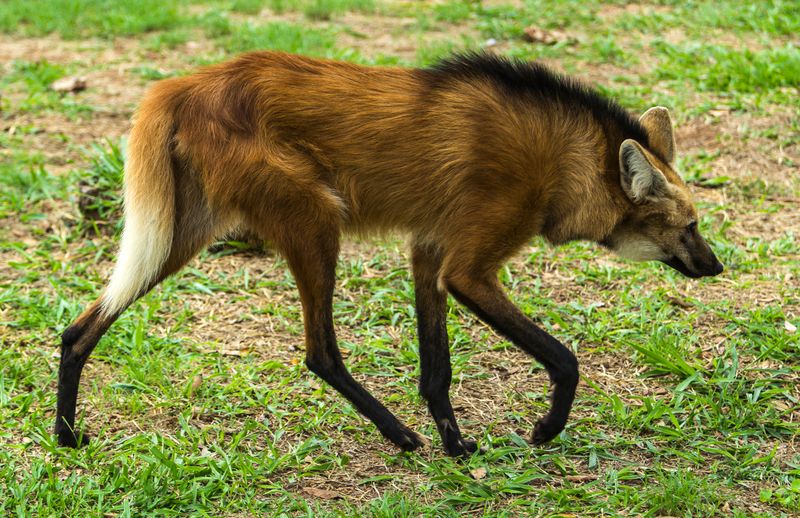
The Maned Wolf, with its long legs and distinctive mane, resembles a creature from mythology. Found in the Brazilian savannah, it’s not a true wolf but a unique species. Its diet includes fruit, showcasing its adaptability. Solitary by nature, it marks its territory with a distinctive scent. The Maned Wolf is an icon of the South American wild, its image often used in folklore. Despite their solitary lifestyle, conservation efforts are vital to their survival. They remind us of the diversity of life and the importance of preserving unique species.
Himalayan Wolf
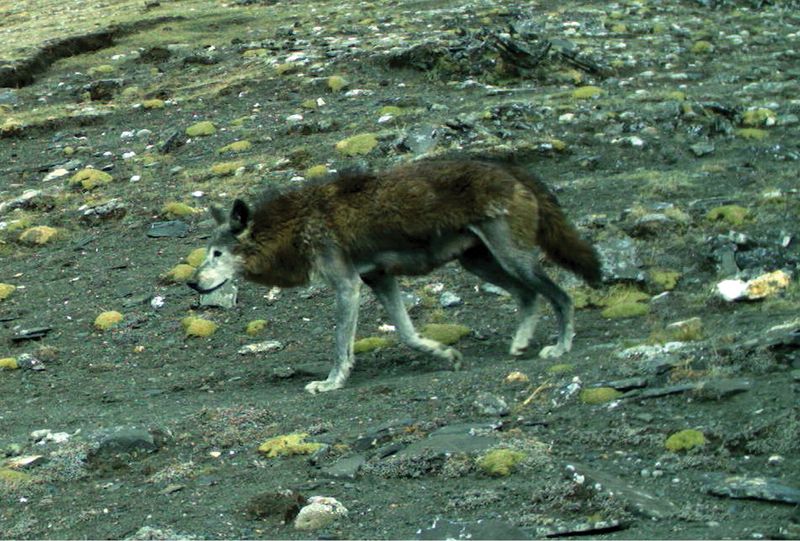
In the snow-capped mountains of the Himalayas, the Himalayan Wolf navigates a realm of extremes. Smaller than its lowland relatives, it’s well-adapted to the high altitudes. With thick fur and a robust build, it endures freezing temperatures. Social creatures, they form tight-knit packs, hunting together in the rugged terrain. Their presence is crucial for controlling prey populations in this delicate ecosystem. Conservation efforts are essential to ensure their survival. The Himalayan Wolf is a testament to nature’s adaptability, thriving in one of the world’s most challenging environments.
Texas Wolf
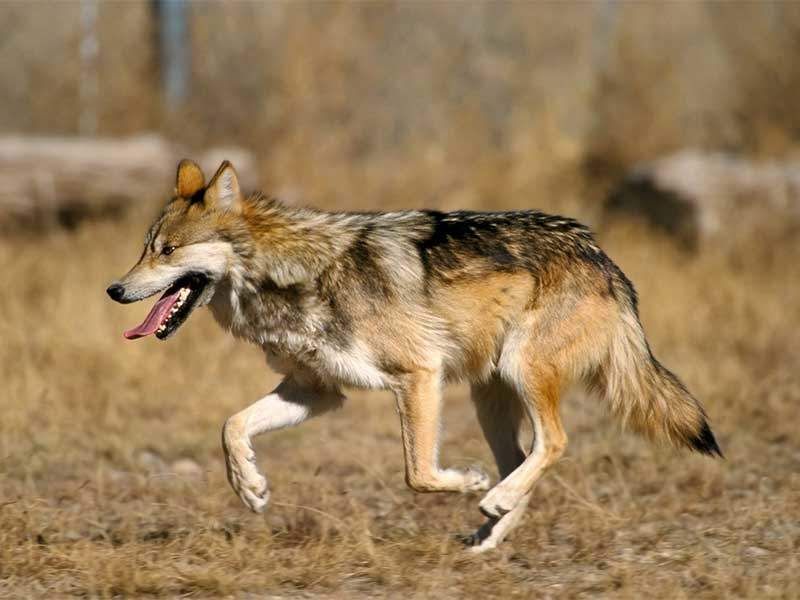
The Texas Wolf, a local legend, is an extinct subspecies that once roamed the southern plains. Known for its lean build and tawny coat, it was a remarkable hunter. Despite its extinction, its story lives on in local folklore. It once played a vital role in the ecosystem, controlling prey populations. Their disappearance highlights the importance of biodiversity conservation. The Texas Wolf’s legacy is a reminder of nature’s fragile balance and our responsibility to protect it. Their memory endures in the stories passed down through generations.
Honshu Wolf
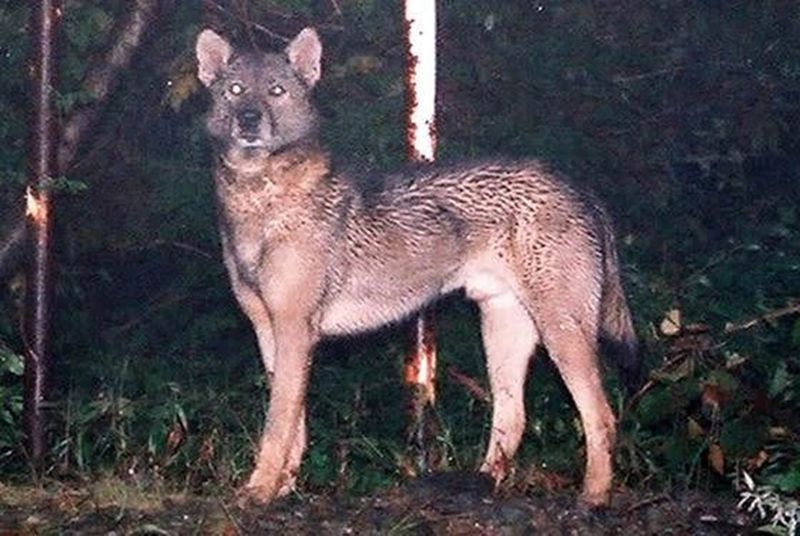
The Honshu Wolf, once native to Japan’s islands, is a symbol of mystery and folklore. Smaller than its cousins, it adapted to mountainous terrains. Its presence was culturally significant, often seen as a guardian spirit. Despite its extinction, legends keep its memory alive. The Honshu Wolf’s story is one of adaptation and cultural importance. Its disappearance highlights the effects of human encroachment and habitat loss. Efforts to preserve its legacy continue through cultural stories and conservation awareness, underscoring the value of protecting endangered species.

